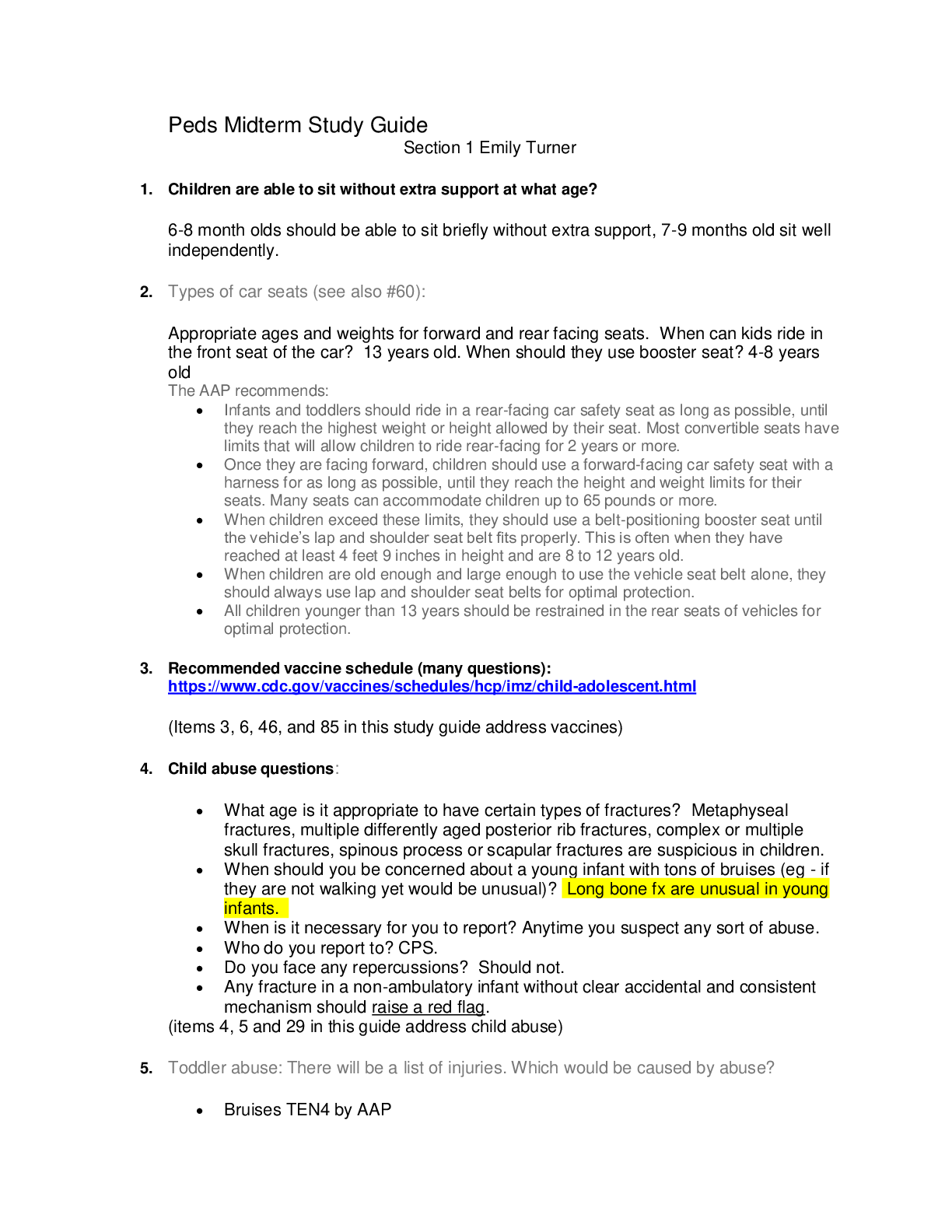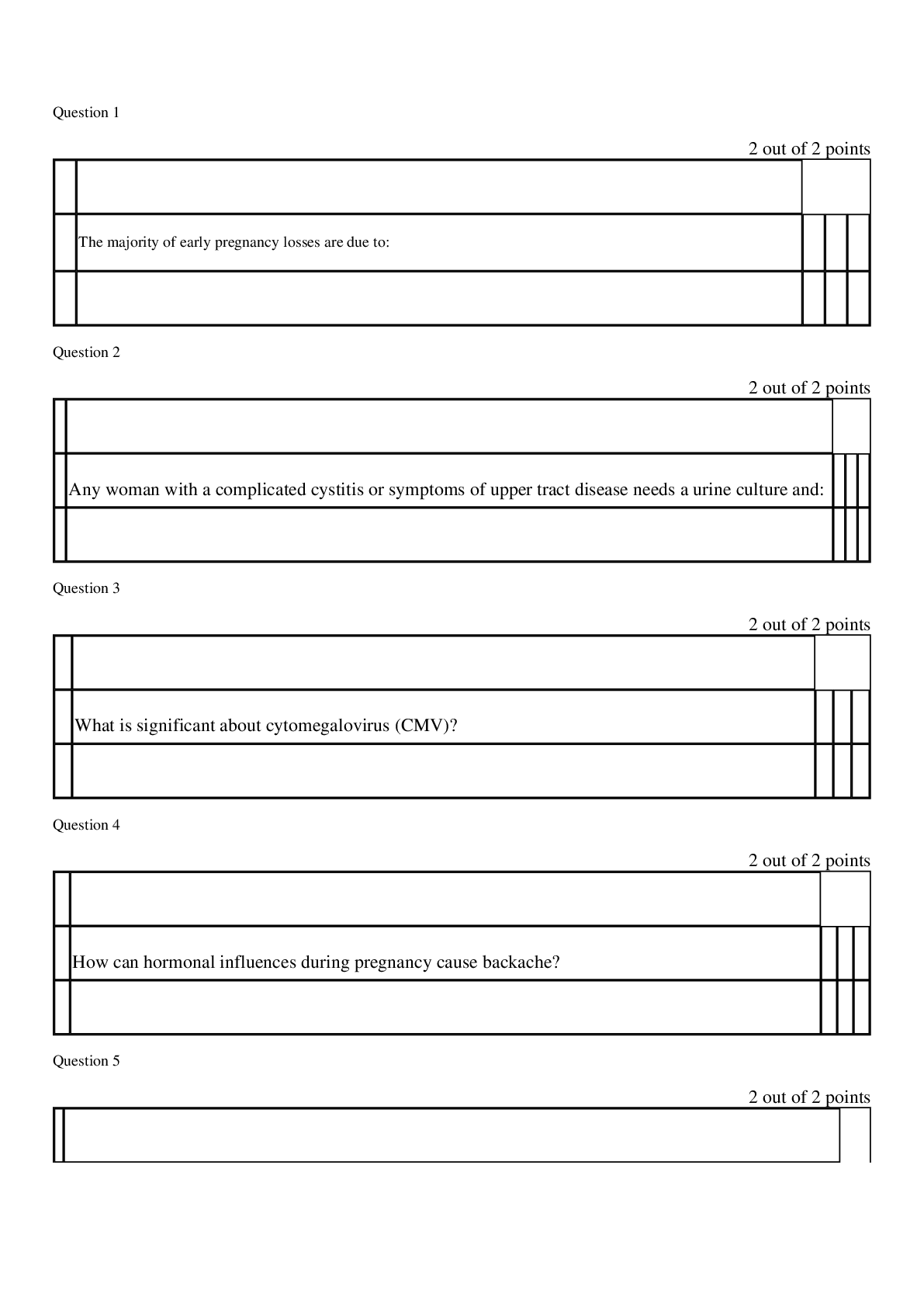*NURSING > STUDY GUIDE > NURS 6541 Peds Midterm Study Guide / NURS6541 Peds Midterm Study Guide (Latest-2020)|Walden Universi (All)
NURS 6541 Peds Midterm Study Guide / NURS6541 Peds Midterm Study Guide (Latest-2020)|Walden University
Document Content and Description Below
1. Children are able to sit without extra support at what age? 6-8 month olds should be able to sit briefly without extra support, 7-9 months old sit well independently. 2. Types of car seats (see... also #60): Appropriate ages and weights for forward and rear facing seats. When can kids ride in the front seat of the car? 13 years old. When should they use booster seat? 4-8 years old The AAP recommends: • Infants and toddlers should ride in a rear-facing car safety seat as long as possible, until they reach the highest weight or height allowed by their seat. Most convertible seats have limits that will allow children to ride rear-facing for 2 years or more. • Once they are facing forward, children should use a forward-facing car safety seat with a harness for as long as possible, until they reach the height and weight limits for their seats. Many seats can accommodate children up to 65 pounds or more. • When children exceed these limits, they should use a belt-positioning booster seat until the vehicle’s lap and shoulder seat belt fits properly. This is often when they have reached at least 4 feet 9 inches in height and are 8 to 12 years old. • When children are old enough and large enough to use the vehicle seat belt alone, they should always use lap and shoulder seat belts for optimal protection. • All children younger than 13 years should be restrained in the rear seats of vehicles for optimal protection. 3. Recommended vaccine schedule (many questions): https://www.cdc.gov/vaccines/schedules/hcp/imz/child-adolescent.html (Items 3, 6, 46, and 85 in this study guide address vaccines) 4. Child abuse questions: • What age is it appropriate to have certain types of fractures? Metaphyseal fractures, multiple differently aged posterior rib fractures, complex or multiple skull fractures, spinous process or scapular fractures are suspicious in children. • When should you be concerned about a young infant with tons of bruises (eg - if they are not walking yet would be unusual)? Long bone fx are unusual in young infants. • When is it necessary for you to report? Anytime you suspect any sort of abuse. • Who do you report to? CPS. • Do you face any repercussions? Should not. • Any fracture in a non-ambulatory infant without clear accidental and consistent mechanism should raise a red flag. (items 4, 5 and 29 in this guide address child abuse) 5. Toddler abuse: There will be a list of injuries. Which would be caused by abuse? • Bruises TEN4 by AAP [Show More]
Last updated: 2 years ago
Preview 1 out of 43 pages

Buy this document to get the full access instantly
Instant Download Access after purchase
Buy NowInstant download
We Accept:

Reviews( 0 )
$20.00
Can't find what you want? Try our AI powered Search
Document information
Connected school, study & course
About the document
Uploaded On
Jul 16, 2020
Number of pages
43
Written in
Additional information
This document has been written for:
Uploaded
Jul 16, 2020
Downloads
0
Views
85
















